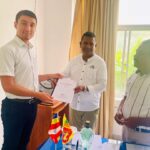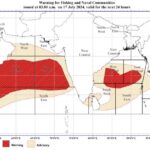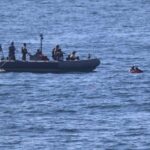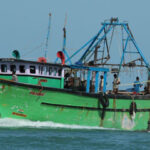The magnificent waters of the Negombo Lagoon are a natural phenomenon of the Indian Ocean and the flowing freshwater that starts from the Kegalle District, nourishing Attanagalu Oya and Dandugam Oya. This spectrum makes it the brackish waters of Negombo. So, what better introduction could there be to this spectacle?
A unique one of a kind
Considering different aspects, there is at least one characteristic that makes the Negombo Lagoon ‘The Negombo Lagoon’. But the question stands as to whether the Negombo Lagoon is a lagoon or an estuary. It is both. This makes it unique and one of a kind! Generally, estuaries are located at the mouth of rivers, deep and perpendicular to the seashore and permanently open to the sea. Nevertheless, a lagoon is a shallow body of water protected by a larger body of water, by barrier islands or even coral reefs. The water in estuaries and lagoons are brackish as the mixing of freshwater and seawater occurs there, giving it the name ‘The Brackish Waters of Negombo’. Did you also know that the Negombo Lagoon is the largest semi-enclosed coastal water body near Colombo? It’s also about 12 km long and 3.5 km at its widest point, with an area of 3164 hectares.
The brackish flora and fauna
The Negombo Lagoon is characterized by the high biodiversity in its flora and fauna. Experts claim that the Negombo Lagoon is one of the most productive and sensitive ecosystems in Sri Lanka. It nurtures more than 140 fish species, which includes both freshwater and seawater species, more than 10 species of crustaceans including shrimp and crab, 36 species of polychaetes, more than 15 species of molluscs and the list goes on. 29 plant species have been collected from the mangrove community of the Negombo Lagoon, of which 18 are true mangroves and 11 are associates. There are more than 4 seagrass species distributed around the shallow parts of the lagoon.
Its valuable neighbour
Adding further value to the lagoon is none other than the lagoon’s neighbour, the Muthurajawela Marsh. The Muthurajawela Marsh and the Negombo Lagoon are two adjacent ecosystems that should be considered a continuum, as they interact with each other. Sources moreover state that the Muthurajawela Marsh is roughly 7,580 acres in area and is the country’s largest saline coastal peat bog. Having said that, the marsh is notable for its unique and highly diverse ecosystem and is listed as one of the priority wetlands in Sri Lanka. The marsh fosters 192 distinct species of flora, 209 species of distinct fauna and 102 species of bird. Astonishingly, some of the species are indigenous to the marsh and endemic to the nation.
A home for you and me
You may not live in Negombo, but this lagoon is an indirect provider to many including you. Firstly, Negombo being a coastal town, the lagoon speaks for the fishery folk and other hoteliers around the vertices of the waters. Families belonging to fishery communities solely depend on the sea and lagoon for its food and sufficient needs by selling the daily catch, making the lagoon a vital part of their lives. Secondly, being a tourist hotspot and just a couple of kilometres away from the Bandaranaike International Airport adds to the economic worth of the lagoon and beach. Thus, any local or foreigner visiting this area has relished Negombo Lagoon crab or prawn curry. And as the economy grows due to increasing tourism, you and I benefit from a better standard of living. Nonetheless, our ignorance, our negligence, and our irresponsibility can lead to unfortunate events.
The unprecedented tragedy…
Unfortunately, around two weeks ago, Sri Lanka faced the worst marine ecological disaster ever. Yes, it is the explosion of the MV X-Press Pearl. This, sadly, is the most disastrous and miserable incident that anyone who loves the environment can witness. Due to the plastic pellets that were present as cargo in the ship, marine animals including various species of fish, vibrant corals and even immune creatures like sea turtles and dolphins are gasping for breaths of oxygen and are being washed ashore to several coastlines along the west. While some higher personnel claim that they took precautions so that the Negombo Lagoon is not impacted, this cannot be assured. When I interviewed some fishermen around the lagoon, they stated that no fish, inclusive of prawns and crabs, have been caught (no debris has been seen). They further said that the situation is so bad that they cannot even fulfil their basic catch of Rs. 500.00. Astoundingly, the reason cannot be identified. Since this issue has not been addressed and not taken care of, we must open our eyes.
Time to wake up
The perfect moment is right in front of our eyes. Although we all say that we have to make the world a better place and preserve our environment, it’s not at all enough. We have to show it. We have to prove it. Like the young environmental activist Greta Thunberg states, “I want you to act as if your house is on fire. Because it is.”, I want you to start small. Look around you and first think, and then play your part. Understand that what we are doing is wrong and proceed on what is correct. Lastly, I would like to end this article by instilling a thought in your heart. “We must SPEAK for those who can’t speak for themselves, or else they may ACT against us who can’t act for others!” (Chenoa Rodrigo)
Subscribe to the Oceanlust Youtube Channel and watch Chenoa’s exclusive interview with us.





Leave a Reply